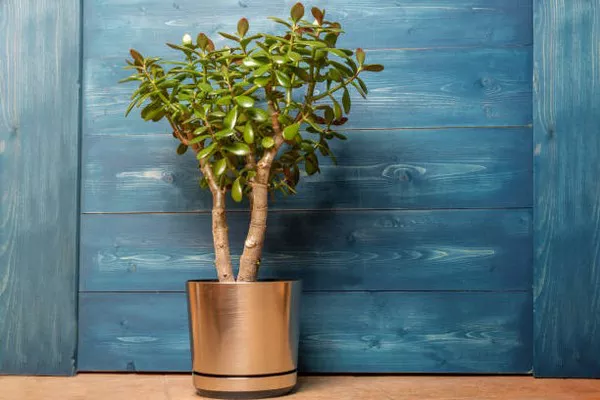Bonsai, the art of cultivating miniature trees, has captivated enthusiasts for centuries with its delicate beauty and profound symbolism. However, amidst the meticulous pruning and shaping, one fundamental question persists: How often should one water a bonsai plant? The answer to this query lies at the heart of successful bonsai care, as watering directly impacts the health, vigor, and longevity of these miniature marvels.
Understanding the Dynamics of Bonsai Watering
Before delving into specific watering schedules, it’s crucial to grasp the underlying dynamics that govern bonsai hydration. Bonsai plants, despite their diminutive size, possess the same biological processes as their larger counterparts. They require water to sustain cellular functions, transport nutrients, and maintain overall vitality.
Yet, unlike standard potted plants, bonsai trees are typically confined to shallow containers, which significantly influence their water requirements. The limited soil volume in bonsai pots translates to a more rapid depletion of moisture, necessitating frequent watering to prevent dehydration.
Factors Influencing Bonsai Watering Frequency
Several factors influence the frequency with which you should water your bonsai. Understanding these variables is essential for tailoring a watering regimen suited to your specific plant’s needs:
1. Species of Bonsai: Different species exhibit varying water requirements. For instance, tropical bonsai species such as Ficus may necessitate more frequent watering due to their preference for consistently moist soil, while conifers like Junipers may thrive with less frequent watering intervals.
2. Climate and Environment: Environmental conditions play a pivotal role in bonsai hydration. Bonsai trees kept in hot, arid climates will require more frequent watering to offset moisture loss through evaporation, whereas those in cooler, more humid environments may require less frequent watering.
3. Seasonal Variations: The watering needs of bonsai plants fluctuate with the changing seasons. During the hot summer months, increased temperatures and higher evaporation rates may necessitate more frequent watering, while in winter, reduced sunlight and lower temperatures may warrant a decrease in watering frequency.
4. Soil Composition and Drainage: The type of soil used in bonsai cultivation directly impacts its water retention and drainage properties. Well-draining soil mixes facilitate adequate moisture distribution while preventing waterlogged conditions that can lead to root rot. Assessing the soil composition of your bonsai is crucial in determining the appropriate watering frequency.
Developing a Watering Schedule:
Given the multifaceted nature of bonsai watering requirements, developing a customized watering schedule is imperative for promoting optimal growth and health. Here’s a step-by-step approach to crafting an effective watering regimen:
1. Know Your Bonsai: Familiarize yourself with the specific species of bonsai you are cultivating, as well as its unique water needs and preferences. Researching the native habitat of your bonsai species can provide valuable insights into its natural watering requirements.
2. Observe and Monitor: Regularly observe your bonsai plant for signs of water stress. Wilting leaves, dry soil, and browning foliage are indicators that your bonsai may require more frequent watering. Conversely, yellowing or drooping foliage can signify overwatering.
3. Test Soil Moisture: Utilize a moisture meter or perform the “chopstick test” to assess soil moisture levels. Insert a chopstick or wooden skewer into the soil, and if it emerges damp, your bonsai likely does not require immediate watering. Conversely, if the soil adheres to the stick or feels dry to the touch, it’s time to water.
4. Watering Technique: When watering your bonsai, ensure thorough saturation of the soil to promote even moisture distribution. Water the entire root zone until water flows freely from the drainage holes at the bottom of the pot. Avoid superficial watering, as this can lead to uneven moisture levels and root dehydration.
5. Adapt to Seasonal Changes: Adjust your watering frequency in response to seasonal fluctuations in temperature, humidity, and sunlight. During periods of high heat and low humidity, increase watering frequency to prevent dehydration, while reducing watering during cooler, wetter months to prevent waterlogged conditions.
6. Maintain Consistency: Consistency is key to successful bonsai watering. Establish a regular watering schedule based on your bonsai’s individual needs and environmental conditions, and strive to adhere to it consistently to avoid fluctuations in soil moisture levels.
7. Monitor Drainage: Pay attention to the drainage capacity of your bonsai pot to prevent waterlogging. Ensure that excess water can freely drain from the pot, as stagnant water can suffocate roots and promote fungal diseases.
8. Consider Environmental Factors: Take into account external factors such as air circulation, sunlight exposure, and seasonal weather patterns when determining your bonsai watering schedule. These variables can influence soil moisture retention and evaporation rates, necessitating adjustments to your watering regimen.
The Importance of Observation and Flexibility
While establishing a structured watering schedule is essential, it’s equally important to remain adaptable and responsive to the evolving needs of your bonsai plant. Regular observation and monitoring enable you to detect subtle changes in your bonsai’s health and hydration status, allowing you to make timely adjustments to your watering regimen as needed.
Conclusion
In conclusion, the frequency with which you should water a bonsai plant is influenced by a myriad of factors, including species, climate, season, soil composition, and environmental conditions. By understanding these dynamics and developing a personalized watering schedule based on careful observation and monitoring, you can ensure the optimal health and vitality of your bonsai, fostering its growth and longevity for years to come. Remember, successful bonsai cultivation is as much an art as it is a science, requiring patience, diligence, and a deep appreciation for the intricate balance of nature.


